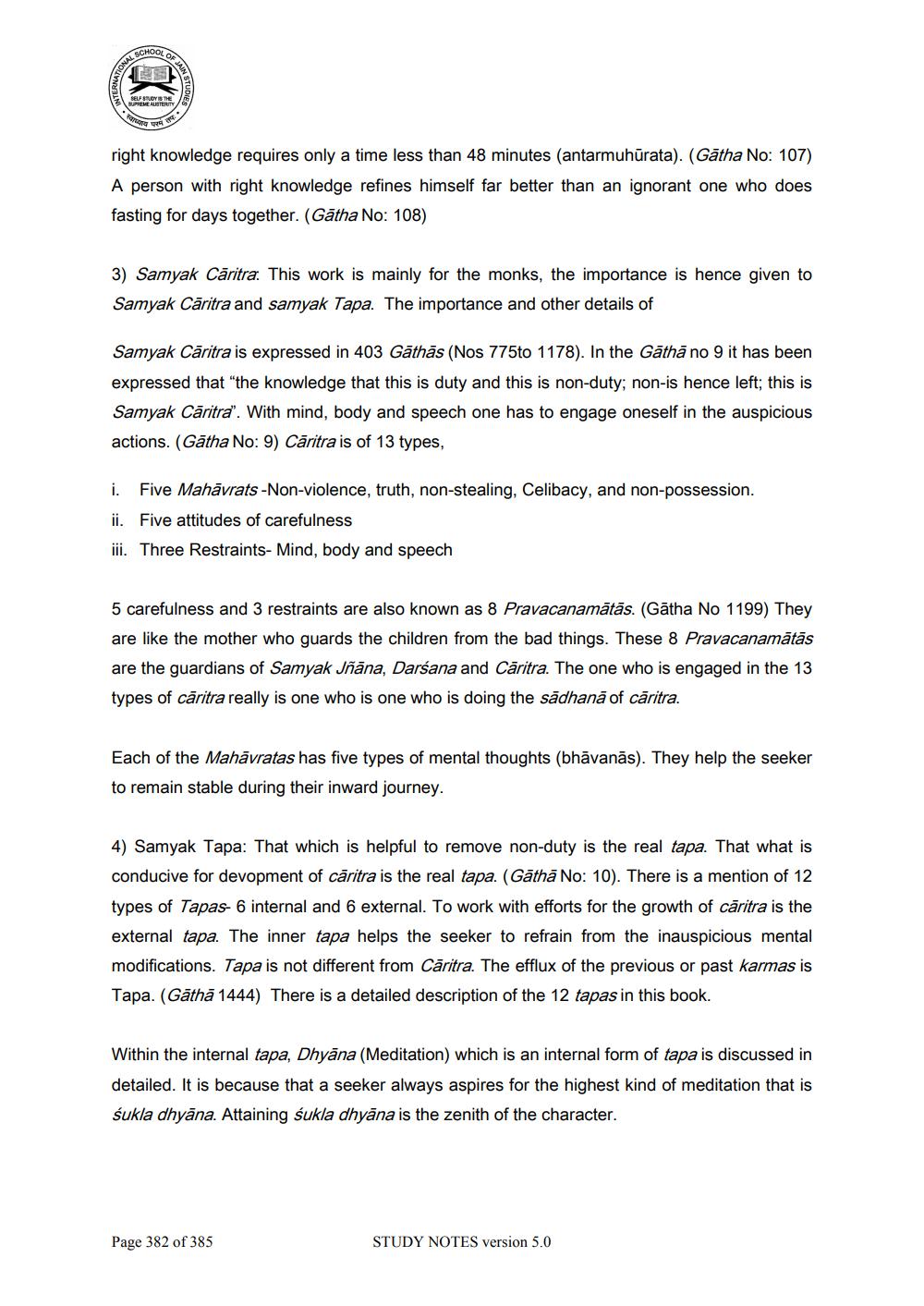________________
right knowledge requires only a time less than 48 minutes (antarmuhūrata). (Gātha No: 107) A person with right knowledge refines himself far better than an ignorant one who does fasting for days together. (Gātha No: 108)
3) Samyak Caritra. This work is mainly for the monks, the importance is hence given to Samyak Cāritra and samyak Tapa. The importance and other details of
Samyak Cāritra is expressed in 403 Gāthās (Nos 775to 1178). In the Gāthā no 9 it has been expressed that the knowledge that this is duty and this is non-duty; non-is hence left; this is Samyak Caritra". With mind, body and speech one has to engage oneself in the auspicious actions. (Gātha No: 9) Caritra is of 13 types,
i. Five Mahāvrats -Non-violence, truth, non-stealing, Celibacy, and non-possession. ii. Five attitudes of carefulness iii. Three Restraints- Mind, body and speech
5 carefulness and 3 restraints are also known as 8 Pravacanamātās. (Gātha No 1199) They are like the mother who guards the children from the bad things. These 8 Pravacanamātās are the guardians of Samyak Jñana, Darśana and Caritra. The one who is engaged in the 13 types of cāritra really is one who is one who is doing the sādhanā of cāritra.
Each of the Mahāvratas has five types of mental thoughts (bhāvanās). They help the seeker to remain stable during their inward journey.
4) Samyak Tapa: That which is helpful to remove non-duty is the real tapa. That what is conducive for devopment of căritra is the real tapa. (Gāthā No: 10). There is a mention of 12 types of Tapas- 6 internal and 6 external. To work with efforts for the growth of caritra is the external tapa. The inner tapa helps the seeker to refrain from the inauspicious mental modifications. Tapa is not different from Càritra. The efflux of the previous or past karmas is Tapa. (Gāthā 1444) There is a detailed description of the 12 tapas in this book.
Within the internal tapa, Dhyana (Meditation) which is an internal form of tapa is discussed in detailed. It is because that a seeker always aspires for the highest kind of meditation that is śukla dhyāna. Attaining sukla dhyāna is the zenith of the character.
Page 382 of 385
STUDY NOTES version 5.0




